Readers: Metro’s Decision to Buy 15 Reconditioned Articulated Buses Green & Frugal
In the poll last week readers were supportive of Metro’s decision to buy used articulated buses and have them completely reconditioned. Starting in June five will replace five of the twelve regular 40 foot buses on the #70 (Grand) MetroBus route, by the end of summer all 12 will be these 60 foot articulated buses. These offer more seats, more standing room, and two exit doors.
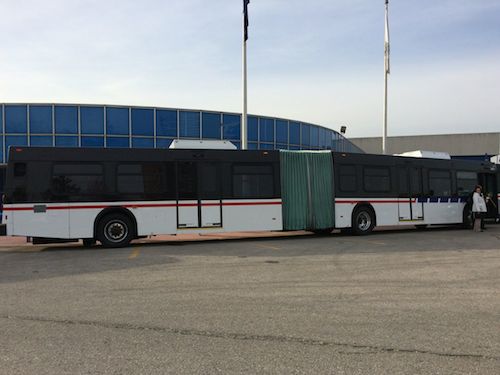
Here are the poll results:
Q: Metro’s 60ft articulated buses are completely rebuilt 2004 New Flyer models from Ottawa, costing $430k/ea vs $825k/ea new, reaction?
- Excellent, very green & frugal decision. 43 [55.13%]
- June can’t come soon enough! 12 [15.38%]
- Other: 7 [8.97%]
- Cool, Canadian hand-me-downs
- Focus on revenue making deals to increase discretionary funds for the city
- Should have scheduled 2x as many busses on the route
- Can’t imagine how it can make our turns.
- Streetcar would be ideal
- Depends on whether it’s a complete rebuild or just cosmetics
- Try it out
- Really, Canadian hand-me-downs? 5 [6.41%]
- Rebuilt or new, too big to run on Grand 4 [5.13%]
- Unsure/No Answer 4 [5.13%]
- St. Louis will need to do a better job clearing snow along the route. 3 [3.85%]
Let me address some of the “other” responses. Metro got a federal grant to buy buses, running 24 rather than 12 on the route would double the operating costs (labor, fuel, maintenance) which isn’t something the grant covered. If Missouri had higher fuel taxes with part going toward transit agencies then increasing the frequency might be an option. The articulated buses are actually easier to turn than the regular 40 foot buses. Why? These are 30 foot buses with a 30 foot trailer. Drivers will get new training but I don’t think we’ll see any major issues since the #70 route is mostly a straight line up and down Grand. That said, in snow they might experience issues. I love streetcars but Grand doesn’t have the density at the ends to justify the capital expense.
I agree with the readers — this was an excellent decision and June can’t come soon enough.
Now I’d like to highlight a couple of other recent procurement decisions that appear to also be wise choices. Wheels & side glass.
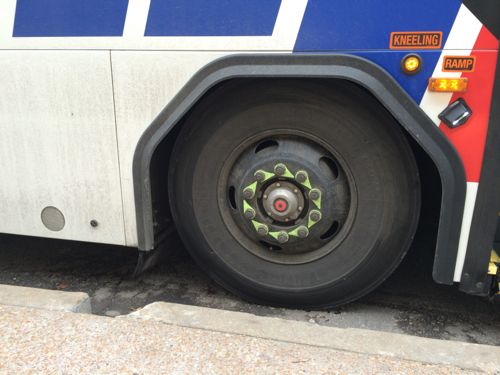
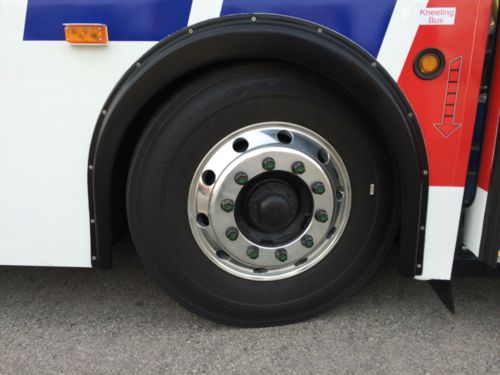
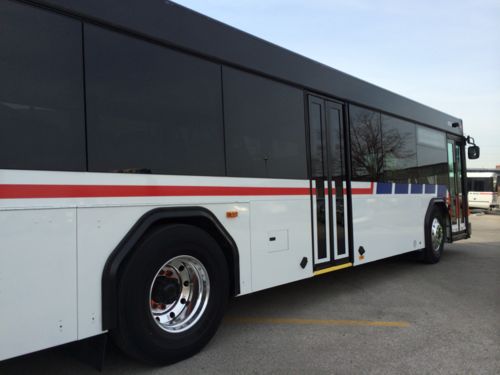
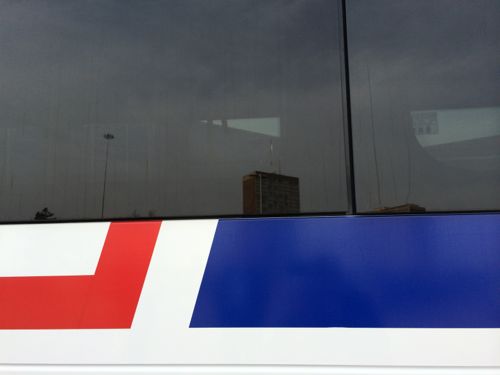
It looks like Metro is making very wise decisions, always looking to reduce maintenance costs. These efforts have been noticed by the industry:
The results of the program have been significant. In 2002, Metro’s bus group achieved 10,124 miles between breakdowns compared with 21,827 miles between breakdowns in 2009 – a 115-percent improvement. (Source: Top-Notch Vehicle Maintenance Programs Help Transit Agencies Excel)
So thank you to the staff at Metro for sweating the details on maintenance schedules, fretting over specifications for purchasing buses.
— Steve Patterson
Metro needs to come up with a new paint scheme. Current one is horrid.
I sort of disagree – while it’s not the best one out there, it’s certainly not “horrid”. If anything, it’s more insipid than ugly or bad. But to continue the discussion, which liveries do you think are better and not “horrid”? The red double deckers in London? The diagonal yellow stripes of Dallas’ DART? The blue CTA Jump bus? Personally, I prefer any standard, consistent paint scheme over vehicles covered in a mish mash of advertising messages.
I’d like to see Metro commission a wrap/paint-job that mimics our flag. Anyone with some PS skills want to take a shot?
Imagining the wavy white/blue bars running along the side near the base board. The exact flag need not be matched, but the general coloring/imagery would be a component.
Which flag? United States? Missouri? Illinois? St. Louis City? St. Louis County? Chesterfield?
The STL City one…with the red field, gold bezant and wavy lines. Realize that doesn’t fly for the “regional” focus, but I don’t care.
the stl county flag, WTFIT?
I don’t think they need to mimic anyone per say, something unique, something STL. However Edmonton and Vienna are two bus paint jobs that I think look better than what we have here.
These are NOT “30 foot buses with a 30 foot trailer”, these are 60′ long vehicles that bend in the middle and have steering axles at both the front and the rear, along with a rear engine (in the “trailer”, as you insist on calling the back half), so, yes, they are, in some ways, easier to maneuver than a 40′ bus. They’re easier to turn / bend around corners, but the operators need more space at stops to pull completely to the curb and not leave the back end hanging out in the traffic lane. This will be the bigger challenge along Grand, since dwell time (the time it takes for passengers to board and get off) will necessarily be longer (with bigger passenger loads).
As to operating costs – a bigger, heavier vehicle will necessarily go through more diesel fuel and more tires than a smaller, lighter vehicle – you can’t argue with the laws of physics. Metro has also had to make one-time investments in new vehicle lifts and modifications to bus stops to handle the larger buses. The flip side is that an operator is being pretty much paid the same salary and benefits to drive a 60′ vehicle as they are to drive a 30′ or 40′ one – there’s a never-ending balancing act between increasing service on busy segments of busy routes versus putting out service on routes where there is less (but still some) demand for public transit.
An articulated bus “is usually a single-deck design, and comprises two rigid sections linked by a pivoting joint.” Translation: a short bus pulling a trailer. http://en.wikipedia.org/wiki/Articulated_bus
The dwell time will likely be equal or less than current. Riders have been packed into the 40 ft buses, but ridership will increase. Two doors for exiting will speed up the process.
To use your analogy, you’re literally getting the cart before the horse – with an articulated bus, the engine is in the “trailer”, not in the front half – the rear is powered and pushing the front, not the front pulling the back! And when it comes to dwell time, it’s not the people getting off that slows things down, it’s the need for each boarding passenger to pay a fare, request a transfer and/or show a pass that takes time, hopefully all using the front door – more passengers = more time to get people on board.
Ok, so Metro was given a $70 million revenue increase in 2010 because of proposition A (which I personally worked on knocking doors) and they can’t even afford extra bus service? I feel that Metro really needs to be audited or in some way pressured to provide better bus service, it absolutely cannot be more expensive than these new BRT lines and would increase ridership quicker. Not to suggest new infrastructure is bad, but I’m sure you know as well as I how hard it is being carless here. Getting back to south city past 7pm is a nightmare, even the #11 Chippewa (the third most ridden bus in the city!) runs only every 40 minutes at night. We surely do not need grants to provide better bus service right now when the City/County are paying 1% in sales tax.
Define “more” – my understanding is that much of the tax increase went toward restoring reduced or eliminated bus service in the county, not toward increasing service in the city. I’m pretty sure that total service hours have increased, significantly, covering more of the areas that are paying the taxes.